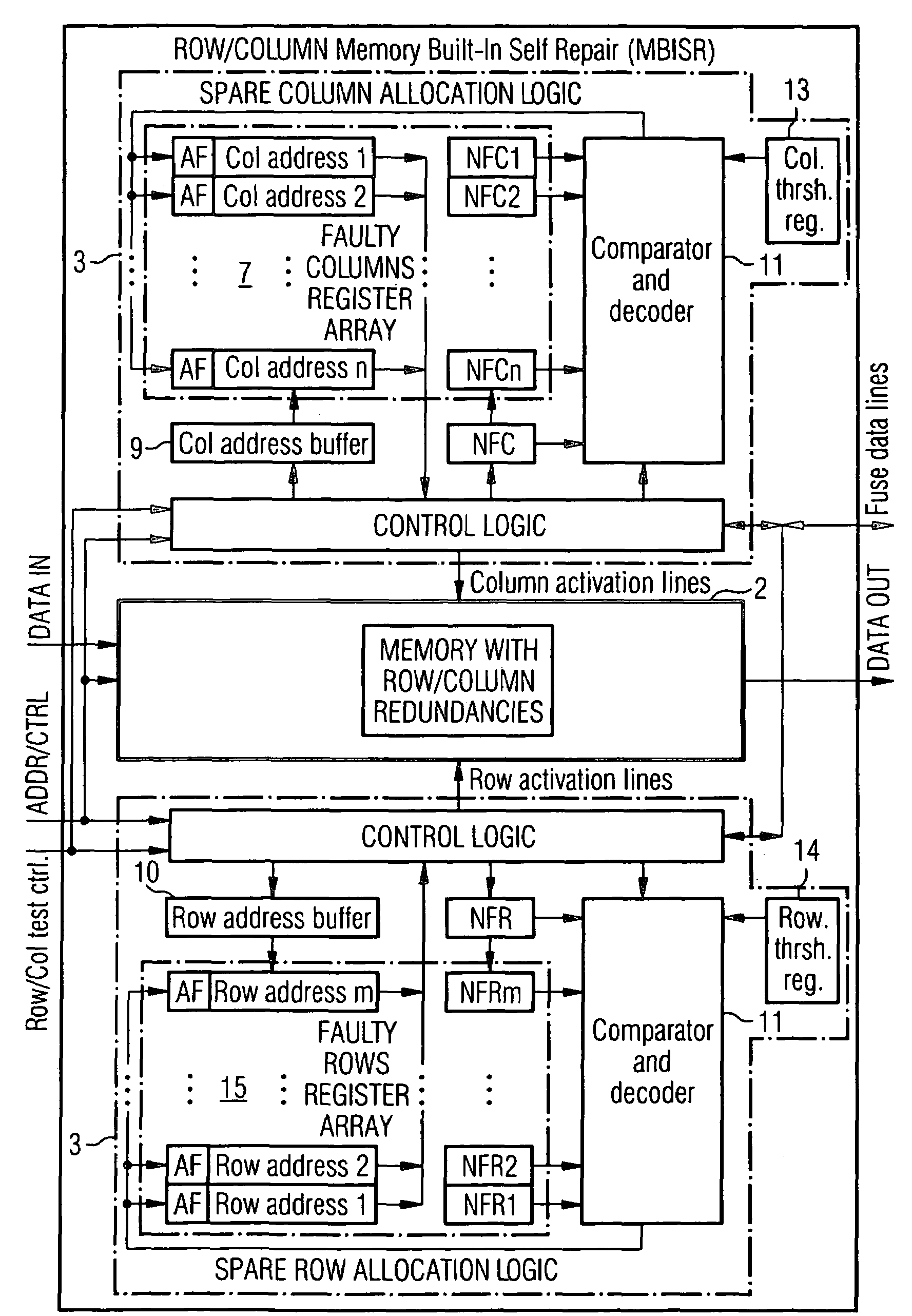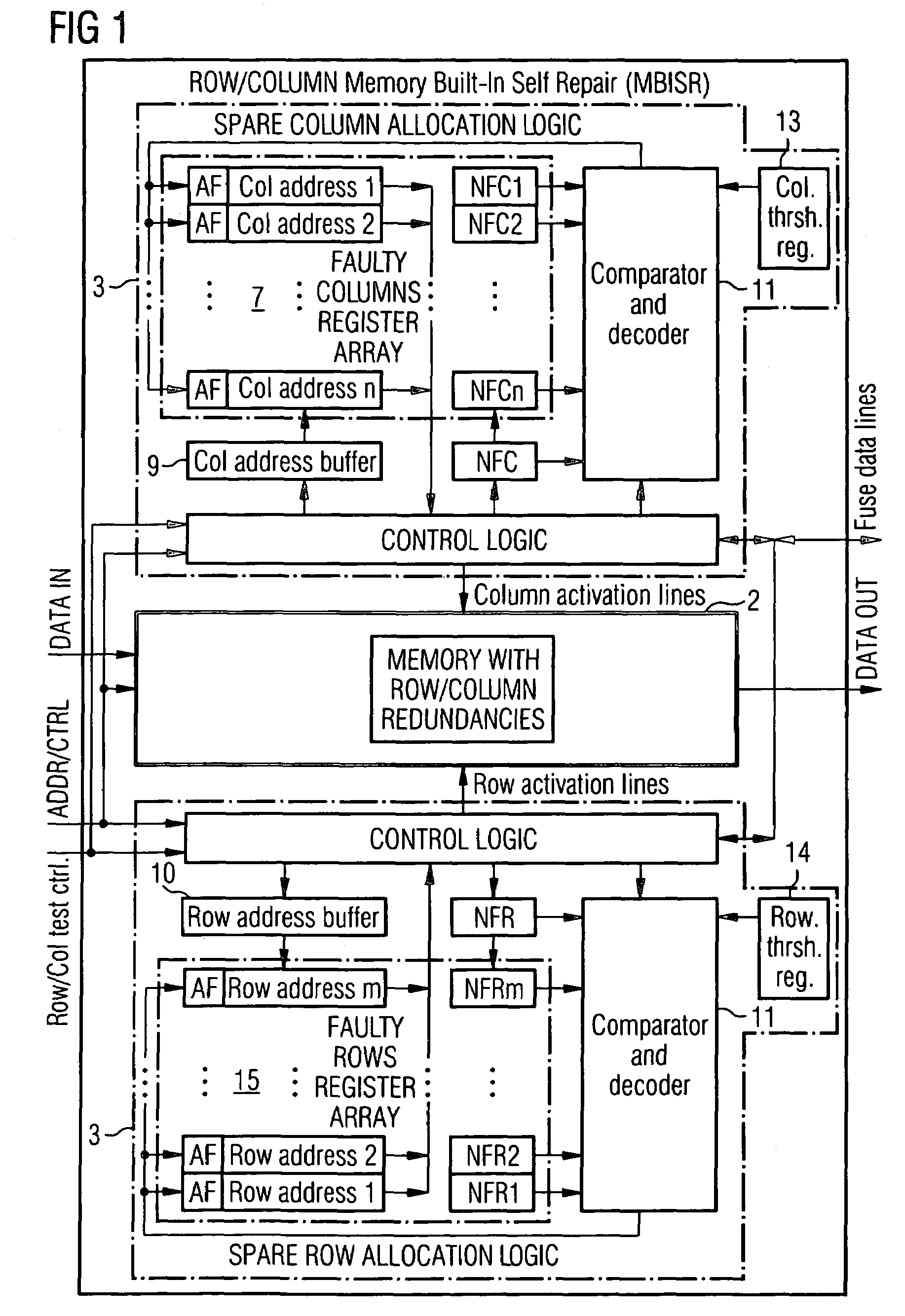Memory built-in self repair (MBISR) circuits/devices and method for repairing a memory comprising a memory built-in self repair (MBISR) structure
a self-repairing and memory technology, applied in error detection/correction, digital storage, instruments, etc., can solve the problems of discarded memories which might be recovered instead, excessive waste of spare cells, and inability to use memory, so as to optimize the allocation of available redundant resources, improve performance, and improve performan
- Summary
- Abstract
- Description
- Claims
- Application Information
AI Technical Summary
Benefits of technology
Problems solved by technology
Method used
Image
Examples
Embodiment Construction
[0032]Circuit infrastructure needed to implement a spare row / column allocation as part of an embodiment of the method according to the invention is shown in FIGS. 1 and 2, wherein FIG. 2 is a more detailed representation of a Column Memory Built-In Self Repair (MBISR) circuit 3, which Column Memory Built-In Self Repair (MBISR) circuit 3 is part of the scheme of FIG. 1. Each memory array 2 (see also FIG. 3) with a given amount of spare rows and columns is provided with two independent spare row / column allocation circuits (Memory Built-In Self Repair (MBISR) circuits) 3, i.e. one Column Memory Built-In Self Repair (MBISR) circuit (see FIG. 2), and one Row Memory Built-In Self Repair (MBISR) circuit. It has to be understood that in the present example the principle structures of the Column Memory Built-In Self Repair (MBISR) circuit and of the Row Memory Built-In Self Repair (MBISR) circuit are the same. Hence, the detailed scheme of FIG. 2 showing an embodiment of the Column Memory Bu...
PUM
 Login to View More
Login to View More Abstract
Description
Claims
Application Information
 Login to View More
Login to View More - R&D
- Intellectual Property
- Life Sciences
- Materials
- Tech Scout
- Unparalleled Data Quality
- Higher Quality Content
- 60% Fewer Hallucinations
Browse by: Latest US Patents, China's latest patents, Technical Efficacy Thesaurus, Application Domain, Technology Topic, Popular Technical Reports.
© 2025 PatSnap. All rights reserved.Legal|Privacy policy|Modern Slavery Act Transparency Statement|Sitemap|About US| Contact US: help@patsnap.com



